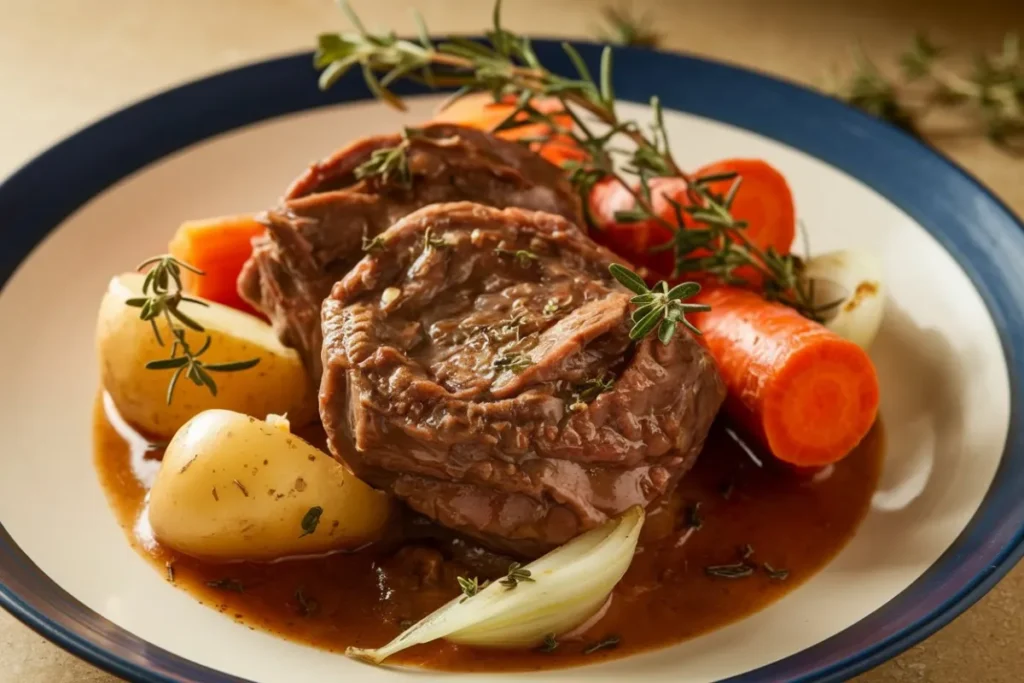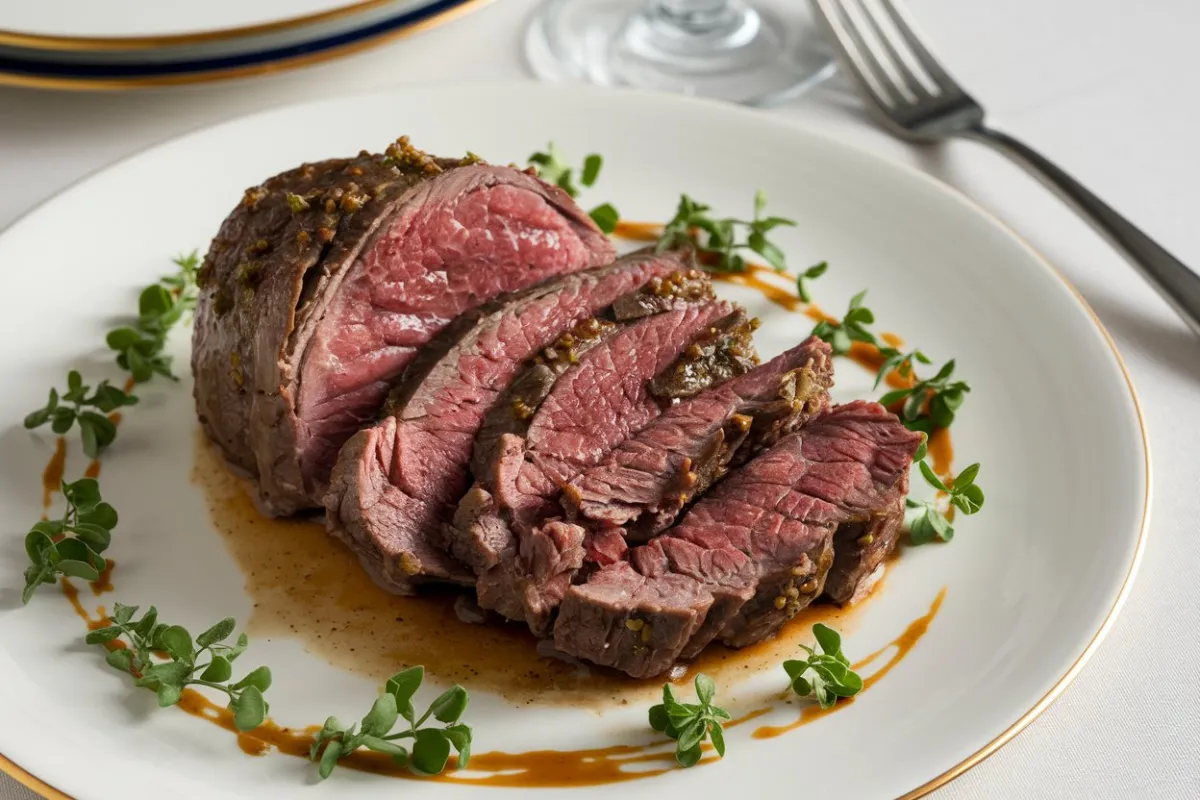Introduction to Beef Cheeks
Beef cheeks, as the name suggests, are the facial muscles of a cow. Often overlooked in the culinary world, beef cheek meat is gaining popularity due to its rich flavor and versatile cooking options. This underrated cut of meat is making waves among chefs and home cooks alike. But what makes it so special? Why should you consider adding beef cheeks to your menu?
In this article, we’ll explore the unique qualities of beef cheek meat, its nutritional profile, and the best cooking methods. By the end, you’ll understand why beef cheeks are not only a delicious choice but also a healthy one. We’ll also link you to some valuable resources, like the Hill Street Grocer’s guide on all things related to beef cheeks.
Nutritional Profile of Beef Cheeks
When it comes to nutrition, beef cheeks pack a punch. This cut is rich in protein, making it an excellent option for those looking to build muscle or maintain a balanced diet. Additionally, beef cheeks are lower in calories and fat compared to more popular cuts like ribeye or sirloin, making them a lean yet flavorful option.
Moreover, beef cheeks are loaded with essential vitamins and minerals, including:
- Iron: Vital for transporting oxygen in the blood.
- Zinc: Supports immune function.
- B-vitamins: Crucial for energy production and brain health.
In comparison to other cuts, beef cheeks are a healthier choice, offering a high nutrient density. They are also rich in collagen and gelatin, substances that provide numerous benefits, including improved skin elasticity and joint health. For those interested in slow-cooking methods, the Healthy Recipes Blog offers an excellent guide on preparing melt-in-your-mouth beef cheeks.
Flavor Profile and Texture
The flavor of beef cheek meat is often described as rich, gamey, and slightly sweet. This cut has a unique ability to absorb the flavors of the liquids and spices it’s cooked in, making it a versatile choice for a wide range of dishes. The texture, while tough initially, transforms into a tender, melt-in-your-mouth experience when cooked properly.
Why the Flavor Stands Out
- Rich and Gamey: Beef cheeks have a distinct flavor that stands out in any dish.
- Versatility: They pair well with various sauces, wines, and spices, absorbing these flavors beautifully.
- Tenderness: When slow-cooked, beef cheeks become incredibly tender, making them perfect for stews, braises, and other slow-cooked dishes.
Popular Cooking Methods for Beef Cheeks

Cooking beef cheeks to perfection requires understanding the right techniques. Here are some of the most popular methods:
Slow Cooking
Slow cooking is perhaps the best method for preparing beef cheeks. This technique allows the tough muscle fibers to break down over time, resulting in a tender, flavorful dish. A popular recipe is slow-cooked beef cheeks in red wine, where the meat is simmered for hours, absorbing the deep, rich flavors of the wine and herbs.
- Ingredients:
- Beef cheeks
- Red wine
- Garlic, onions, and carrots
- Fresh herbs (thyme, rosemary)
- Steps:
- Sear the beef cheeks to lock in flavor.
- Saute the vegetables in the same pan.
- Add the wine and herbs, and bring to a simmer.
- Transfer everything to a slow cooker and cook on low for 8 hours.
This method results in a dish that’s perfect for a cold winter night or a special family gathering.
Smoking
Smoking beef cheeks is another excellent way to enhance their flavor. The low-and-slow approach of smoking infuses the meat with a smoky, rich taste while keeping it moist and tender. Smoked beef cheeks are a popular choice in barbecue cuisine, offering a unique alternative to more traditional cuts like brisket or ribs.
- Steps:
- Season the beef cheeks with your favorite rub.
- Smoke at a low temperature (around 225°F) for several hours.
- Wrap in foil once they reach the desired color, then continue smoking until tender.
For more detailed guidance on this method, check out the Lone Mountain Wagyu blog, which offers expert tips on smoking beef cheeks.
Braising
Braising is a classic method that works wonderfully with beef cheeks. The process involves searing the meat and then cooking it slowly in a flavorful liquid. This method allows the connective tissue in the cheeks to break down, resulting in a dish that’s rich and comforting.
- Popular Braised Dishes:
- Brasato al Barolo: An Italian dish where beef cheeks are braised in red wine.
- Beef Cheek Bourguignon: A French classic, similar to the famous dish made with other cuts.
Global Recipes Using Beef Cheeks
Mexican Cuisine: Beef Cheek Tacos
In Mexican cuisine, beef cheeks are commonly used in tacos, where the meat’s rich flavor and tender texture shine. To prepare, the cheeks are slow-cooked until they can be shredded easily and then served in warm tortillas with fresh toppings like cilantro, onions, and salsa.
- Why Beef Cheeks?
- The high fat content ensures a juicy, flavorful filling.
- Slow-cooked cheeks have the perfect texture for tacos.
Italian Cuisine: Brasato al Barolo
This traditional Italian dish features beef cheeks braised in Barolo wine, creating a rich, flavorful meal. The meat is cooked with vegetables and herbs, allowing it to absorb the deep, robust flavors of the wine and aromatics.
- Ingredients:
- Beef cheeks
- Barolo wine
- Carrots, celery, onions
- Fresh herbs (rosemary, thyme)
- Preparation:
- Sear the beef cheeks in olive oil.
- Saute the vegetables until soft.
- Add the wine and bring to a boil.
- Simmer until the meat is tender.
This dish is often served with polenta or mashed potatoes, making it a hearty and satisfying meal.
French Cuisine: Beef Cheek Bourguignon
A twist on the classic beef bourguignon, this version uses beef cheeks for a richer, more flavorful dish. The meat is braised in red wine with mushrooms, onions, and bacon, resulting in a decadent French dish that’s perfect for special occasions.
- Steps:
- Sear the beef cheeks in bacon fat.
- Cook the vegetables in the same pan.
- Deglaze with red wine and simmer until the meat is tender.
- Serve with crusty bread or over egg noodles.
Health Benefits of Eating Beef Cheeks
Eating beef cheeks is not just a culinary delight; it also comes with a host of health benefits.
Rich in Collagen and Gelatin
Beef cheeks are particularly rich in collagen and gelatin, which are essential for maintaining healthy skin, hair, and joints. These substances help improve skin elasticity, reduce signs of aging, and support joint health by keeping tissues lubricated.
- Benefits of Collagen:
- Improves skin hydration and elasticity.
- Supports joint health and reduces pain.
- Promotes healthy hair and nails.
Low-Calorie, High-Protein Option
For those watching their calorie intake, beef cheeks offer a lean yet satisfying option. Despite being lower in fat than cuts like ribeye, they still provide a substantial amount of protein, making them ideal for anyone looking to maintain or build muscle.
- Nutritional Comparison:
- Lower in calories and fat than many other cuts.
- High in protein, supporting muscle growth and repair.
These qualities make beef cheeks a great choice for anyone on a calorie-controlled diet or looking to increase their protein intake without adding excess fat.
FAQs: Common Questions About Beef Cheeks
What Are Beef Cheeks?
Beef cheeks are the facial muscles of the cow, known for their rich flavor and tough texture, which becomes tender when cooked properly. They are a popular choice for slow-cooked dishes, where their ability to absorb flavors makes them a standout ingredient.
Is Beef Cheek Meat Tender?
While beef cheek meat starts off tough, it becomes incredibly tender when cooked using slow-cooking methods such as braising, smoking, or in a slow cooker. The long cooking time allows the muscle fibers to break down, resulting in a melt-in-your-mouth texture.
How Do You Cook Beef Cheeks?
Beef cheeks can be cooked in various ways, but slow-cooking methods are preferred. Whether you’re braising them in wine, smoking them for hours, or simmering them in a slow cooker, the key is low and slow cooking to achieve tenderness.
Are Beef Cheeks Healthy?
Yes, beef cheeks are healthy! They are low in calories, high in protein, and rich in collagen, making them beneficial for skin, hair, joints, and overall health. They also contain essential vitamins and minerals like iron and zinc.
Buying and Storing Beef Cheeks
Where to Buy Beef Cheeks
Beef cheeks can be found at local butcher shops, some supermarkets, and online. When buying, look for cheeks that are fresh, with a deep red color and minimal fat. If you’re shopping online, many specialty meat providers offer high-quality beef cheeks.
- Local Butcher: Often the best source for fresh beef cheeks.
- Supermarkets: Availability may vary, but larger stores often carry them.
- Online: Specialty meat sites offer convenience and variety.
Storing Beef Cheeks
Proper storage is key to maintaining the quality of beef cheeks. If you’re not cooking them immediately, store them in the refrigerator for up to three days or freeze them for longer storage. When freezing, wrap them tightly in plastic wrap or place them in a vacuum-sealed bag to prevent freezer burn.
- Refrigeration: Store in the coldest part of the fridge.
- Freezing: Use a vacuum-sealer or airtight bags to prevent freezer burn.
- Shelf Life: Fresh beef cheeks last up to three days in the fridge and up to six months in the freezer.
Cost Considerations and Value for Money
Beef cheeks are often more affordable than more popular cuts, yet they offer great value for money due to their rich flavor and versatility. This makes them a cost-effective choice for both everyday meals and special occasions.
- Price Comparison: Generally cheaper than cuts like ribeye or tenderloin.
- Value: High flavor and versatility make beef cheeks an excellent choice.
Conclusion and Final Thoughts
In conclusion, beef cheeks are an underrated yet incredibly versatile and flavorful cut of meat. Whether you’re looking for a healthy protein source, a delicious slow-cooked dish, or a rich addition to global cuisines, beef cheek meat is a fantastic option. With the right cooking techniques, this tough cut transforms into a tender, melt-in-your-mouth delicacy that is sure to impress.
So next time you’re at the butcher or browsing online, consider picking up some beef cheeks. Experiment with the recipes and techniques mentioned in this article, and enjoy the rich flavors and health benefits they offer.

